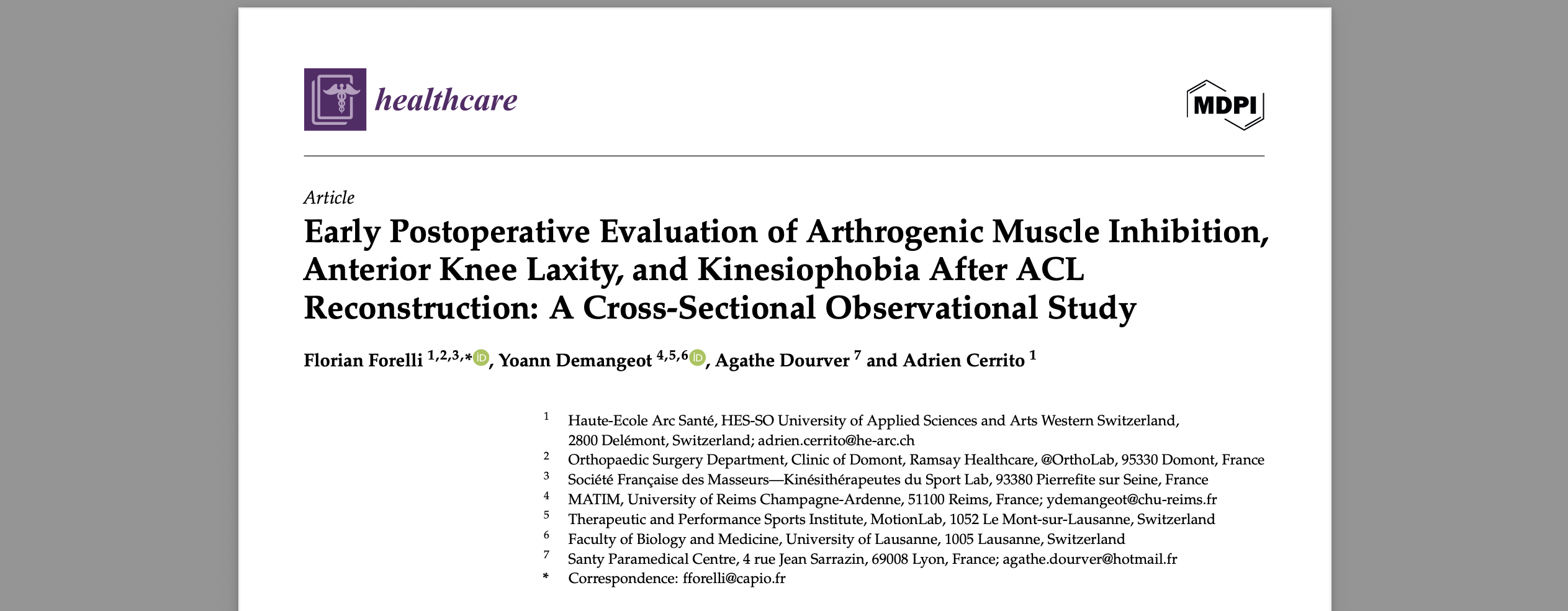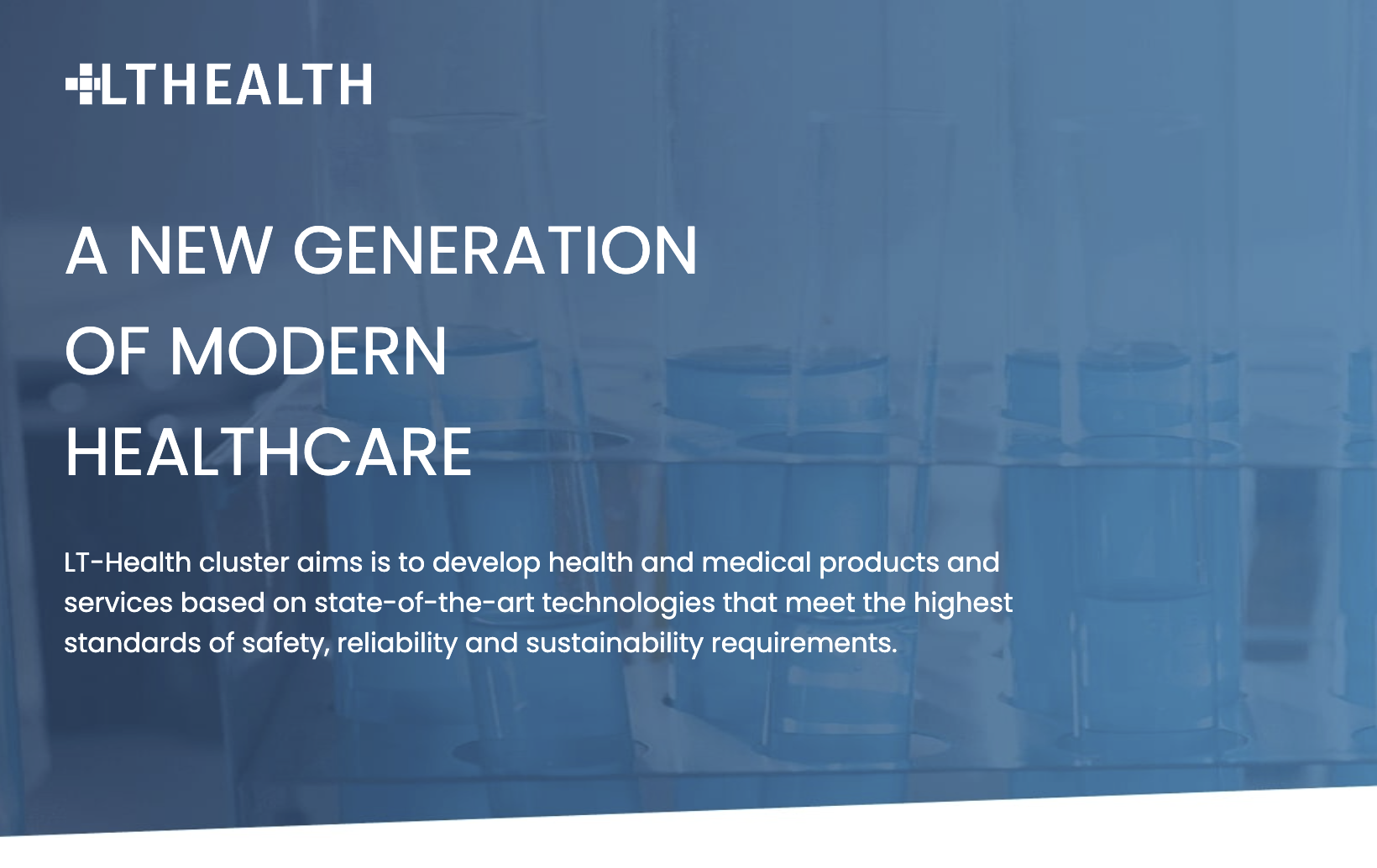In the dynamic and exhilarating world of alpine skiing, the risk of anterior cruciate ligament (ACL) injuries presents a formidable challenge, both for enthusiasts and orthopedic professionals. ACL injuries are a significant concern in this high-velocity sport due to the combination of speed, turns, and the unpredictable nature of snowy terrains. As highlighted in a 2021 study by Posch et al. focusing on recreational alpine skiing, the ACL is predominantly injured in all knee injuries requiring hospitalization, underlining the prevalence and severity of these injuries in the skiing community (1).
Furthermore, a comprehensive review on the ACL (2) in skiing emphasizes the complexity and multifaceted nature of these injuries, exploring various aspects from epidemiology to injury mechanisms (Hermann A, Senner V, 2021)(3). This underscores not only the prevalence but also the intricate biomechanical and environmental factors contributing to ACL injuries in skiing.
The advent of advanced diagnostic tools like Dyneelax and GNRB marks a significant advancement in the assessment and management of ACL injuries. These state-of-the-art arthrometers provide unmatched precision in evaluating ACL integrity, crucial for accurate diagnosis and effective intervention. For orthopedic surgeons and radiologists, these tools enhance the precision of diagnostic imaging. For physical therapists and sports medicine doctors, they offer valuable insights into the extent of injury, informing more effective rehabilitation strategies.
This integration of advanced diagnostics and clinical expertise represents a significant stride in tackling ACL injuries in skiing. It not only elevates the standards of treatment but also enriches preventive strategies, aiming to safeguard the passion for skiing while mitigating its inherent risks. This development is particularly pertinent for medical professionals committed to enhancing patient care in sports-related injuries.
I. Overview of ACL Injuries in Skiing
Anterior cruciate ligament (ACL) injuries in skiing represent a significant area of concern within the realm of sports medicine, impacting a diverse range of professionals from orthopedic surgeons to physical therapists. The ACL, a critical ligament in the knee, plays a vital role in providing stability and facilitating movement. Injuries to the ACL can range from minor sprains to complete tears, often occurring during high-impact sports like alpine skiing.
The impact of an ACL injury on skiers ranges from immediate pain and swelling to long-term joint instability. Depending on the severity, it can lead to prolonged periods away from the sport, impacting both professional and recreational athletes. For competitive skiers, an ACL injury can be a career-altering event, requiring a meticulous and carefully planned recovery process. These injuries can indeed necessitate surgical repair, especially in complete tears, followed by extensive rehabilitation.
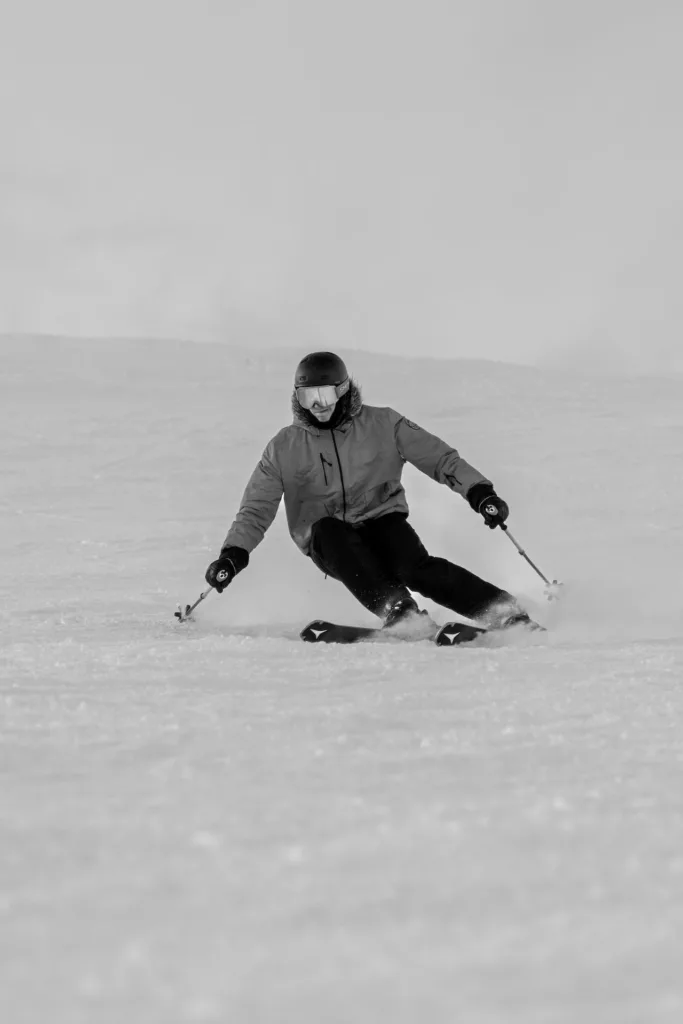
Advanced diagnostic tools such as Dyneelax and GNRB play a pivotal role in accurately assessing these injuries. Their precision in measuring ligament laxity and integrity is crucial for formulating an appropriate treatment plan. For orthopedic surgeons, these tools aid in determining the need for surgery and planning the surgical approach. A 2023 study by Kayla Smith (5) showcased the efficiency of the GNRB® and DYNEELAX® in a clinical setting. Furthermore, for radiologists, these devices provide additional data to supplement imaging findings. A study that was conducted in 2023 by Theo Cojean (6), compares GNRB with MRI, and showcased the tool’s superiority in ACL assessment, especially for diagnosing partial ACL ruptures. Physical therapists and sports medicine doctors also utilize this crucial data collected on the knee to tailor rehabilitation programs, ensuring a safe and effective return to the sport.
II. Epidemiology and Risk Factors
In the context of prevention, understanding the intricacies of ACL injuries is paramount. Initiatives aimed at educating skiers about safe skiing practices, proper use of equipment, and physical conditioning can significantly reduce the risk of ACL injuries. Moreover, continual advancements in skiing equipment and protective gear, informed by ongoing research, offer additional layers of safety for skiers.
The impact of ACL injuries in skiing extends beyond the physical damage to the ligament itself. It encompasses a broader spectrum of considerations, including the psychological effects on athletes, the economic burden associated with treatment and rehabilitation, and the influence on future sporting participation. Therefore, a comprehensive approach involving awareness, prevention, accurate diagnosis, and effective treatment is essential to address this significant issue in the skiing community.


The epidemiology of anterior cruciate ligament (ACL) injuries in skiing is a crucial area of study, providing insights into the prevalence and risk factors associated with these injuries. ACL injuries, particularly in alpine skiing, represent a significant portion of winter sports injuries, affecting a wide demographic ranging from recreational enthusiasts to elite athletes.
A 2021 study focusing on recreational alpine skiing (1) revealed that the ACL is predominantly injured in all knee injuries requiring hospitalization, emphasizing the prevalence of these injuries in the skiing community. This finding is significant as it highlights the vulnerability of recreational skiers to ACL injuries, suggesting a need for targeted preventive measures in this group.
Further delving into the risk factors, Hermann and Senner’s comprehensive 2020 review (3) discusses the multifaceted nature of ACL injuries in skiing, considering aspects like skiing technique, equipment, and environmental conditions. This study provides a broad perspective on the various elements that contribute to the risk of ACL injuries, underlining the complexity of injury mechanisms in this sport.
Additionally, the 2018 study by Westin et al. (4) on competitive adolescent alpine skiers offers valuable insights. It found that ACL injuries occurred more often in the left knee than the right and that a higher number of active years in alpine skiing showed a reduced risk of sustaining an ACL injury. This suggests that experience and skill in skiing might play a protective role against ACL injuries.
Moreover, Ruedl et al.’s 2023 research (7) on equipment-related risk factors for ACL injury in recreational skiers sheds light on the impact of ski equipment on injury risk. This study brings to attention the crucial role of proper equipment selection and maintenance in injury prevention, an often-overlooked aspect in recreational skiing.
In understanding the epidemiology and risk factors of ACL injuries in skiing, it is important to consider the biomechanical forces involved in the sport. Skiing involves rapid changes in direction, jumping, and landing, all of which can place significant strain on the knee joint, particularly the ACL. These activities can lead to injuries through mechanisms such as excessive valgus force, anterior tibial translation, or rotational forces on the knee.
The demographic factors also play a role, with certain groups being more susceptible to ACL injuries. For instance, female skiers have been found to be at a higher risk of ACL injuries compared to their male counterparts, possibly due to differences in muscle strength, hormonal factors, and biomechanical alignment.
In summary, the epidemiology and risk factors of ACL injuries in skiing are multifactorial and complex. A comprehensive understanding of these aspects is crucial for developing effective prevention strategies. These strategies might include targeted training programs for skiers, improvements in ski equipment design, and increased awareness about the risks associated with the sport. For medical professionals, particularly those in sports medicine and orthopedics, this knowledge is vital in both preventing and treating ACL injuries in skiers.



III. Mechanisms of Injury: How Do ACL Injuries Occur While Skiing?
Understanding the mechanisms of injury in skiing is crucial for both prevention and effective treatment of anterior cruciate ligament (ACL) injuries. Alpine skiing, a sport characterized by high speeds and dynamic movements, presents specific scenarios where the risk of ACL injury is heightened. Three such mechanisms, the slip-catch situation and the dynamic snowplow, and the landing back-weighted have been extensively studied and are critical to understanding the epidemiology of these injuries.
The slip-catch mechanism, as explored by Bere et al. in 2011 (8), is a common cause of ACL injuries among professional skiers. This mechanism occurs when the outer ski catches the inside edge, usually during a turn. This action forces the knee into a position of internal rotation and valgus stress, a combination that puts considerable strain on the ACL. Such incidents often happen on hard snow or icy conditions, where edge grip is unpredictable. Read Järvinen et al. (1994) (9).
Similarly, the dynamic snowplow, another mechanism also identified in Bere et al.’s 2011 study (8), involves a forward and inward movement of the skier’s center of mass relative to the base of support. This movement, often accompanied by a partial snowplow position, creates a scenario where the ACL is vulnerable to injury due to the combined forces of valgus stress and anterior tibial translation.
Landing back-weighted is the mechanism identified in Bere et al.’s 2011 study (8) where skiers land with their weight predominantly on the back of the skis. This can lead to a backward lean and increased risk of ACL injury, especially when landing jumps or navigating uneven terrain.
The ‘phantom boot’ mechanism, a term coined by researchers to describe a specific injury scenario in skiing, is another significant contributor to ACL injuries. This phenomenon occurs when the skier, in an attempt to avoid falling, extends one leg while the heel of the boot pushes against the back of the ski, creating a levering action. This action, combined with the positioning of the body and the forces involved in skiing, can result in a significant strain on the ACL. Studies, such as the one conducted by St-Onge et al. in 2004 (12) , have highlighted the role of this mechanism in skiing-related ACL injuries and emphasized its unique biomechanical challenges.
Understanding these mechanisms is paramount for both prevention and diagnosis. From a prevention standpoint, skiers and instructors can be educated on the risks associated with certain skiing techniques and conditions. This awareness can lead to the adoption of safer skiing practices and potentially reduce the incidence of ACL injuries. For instance, training programs can focus on improving balance, strength, and technique to mitigate the risks associated with the slip-catch and dynamic snowplow situations.
From a diagnostic perspective, knowledge of these injury mechanisms assists healthcare professionals in conducting more targeted assessments. For orthopedic surgeons and sports medicine doctors, understanding the typical scenarios in which ACL injuries occur in skiing can guide clinical examinations and inform decision-making regarding imaging and treatment.Furthermore, studies like the one by Ruedl et al. on equipment-related risk factors also contribute to this understanding by highlighting how ski equipment and skiing style can influence the likelihood of injury (7).
IV. Prevention Strategies - How Can I Prevent an ACL Injury from Happening While Skiing?

Prevention strategies for anterior cruciate ligament (ACL) injuries in skiing are vital to reduce the incidence and severity of these injuries. These strategies encompass a range of approaches, including training programs, equipment choices, and modifications in skiing techniques, which can significantly decrease the risk of ACL injuries.
Training Programs: Targeted training programs are essential for building the strength, flexibility, and neuromuscular control needed to protect the knee from the stresses encountered while skiing. As stipulated earlier in the 2018 study by Westin et al. that focused on competitive adolescent alpine skiers, those with more active years in alpine skiing showed a reduced risk of sustaining ACL injuries. This finding suggests that experience and skill development through training can play a protective role against such injuries. Training programs that emphasize core strength, balance, and proprioceptive skills can help skiers maintain better control and stability, reducing the likelihood of injury-inducing scenarios like the slip-catch situation or dynamic snowplow (4).
Equipment Choices: The right equipment choice is also a critical factor in ACL injury prevention. As highlighted in the study by Hermann and Senner (3), equipment choices, including ski bindings, boots, and skis, can influence the risk of ACL injuries. Modern ski bindings that are correctly adjusted for the skier’s weight, skill level, and conditions can reduce the risk of knee injuries by releasing the boot during a fall. Similarly, choosing the right ski boot and ski length that matches the skier’s ability and the terrain can help in maintaining better control and reducing undue stress on the knees.
Skiing Techniques: Adjusting skiing techniques is another crucial aspect of prevention. Skiers should be educated on safer skiing practices, such as maintaining a balanced, forward-leaning stance and avoiding risky maneuvers that can overstrain the knee joint. Instructors and coaches can play a vital role in teaching and reinforcing these techniques, especially for younger skiers and those new to the sport. Emphasizing proper technique during turns and jumps, and avoiding positions that place excessive stress on the knee, such as deep squatting or landing with a straight leg, are key prevention strategies.
Awareness and Education: Raising awareness about the risks of ACL injuries and the importance of prevention strategies is fundamental. This can be achieved through educational programs for skiers of all levels, highlighting the importance of physical conditioning, proper equipment use, and safe skiing practices.
Tailoring to Individual Needs: It’s also important to tailor prevention strategies to individual needs, considering factors like age, skill level, physical fitness, and previous injury history. For instance, adolescent skiers might benefit more from specific balance and agility training, while older skiers may need to focus more on strength and flexibility.
Role of Arthrometers in ACL Injury Prevention: In addition to training, equipment choices, and technique modifications, the use of advanced diagnostic tools like GNRB® and DYNEELAX® arthrometers is crucial in ACL injury prevention in skiing. These tools provide precise assessments of knee stability, aiding in the early detection of ligament weaknesses and guiding effective rehabilitation post-injury. Their integration into preventive strategies ensures a more personalized approach, allowing for tailored training and rehabilitation plans, and ultimately contributes to reducing the incidence of ACL injuries among skiers.
V. Role of Diagnostic Tools in Managing ACL Injuries
5.1 Introducing DYNEELAX and GNRB Robotic Arthrometers
The management of anterior cruciate ligament (ACL) injuries in skiing has been significantly enhanced by the advent of advanced diagnostic tools like GNRB® and DYNEELAX®. These arthrometers represent a leap forward in the precise assessment of ACL integrity, playing a vital role in both the diagnosis and treatment planning stages of ACL injuries.
DYNEELAX® for example assesses knee joint stability by applying both translation and rotation movements to the tibia. This dual-action approach enables DYNEELAX to identify not only translational instabilities but also rotational abnormalities in the knee joint. Such comprehensive analysis is crucial, especially for athletes in sports like skiing, where the knee is subjected to complex stresses involving multiple planes of movement.
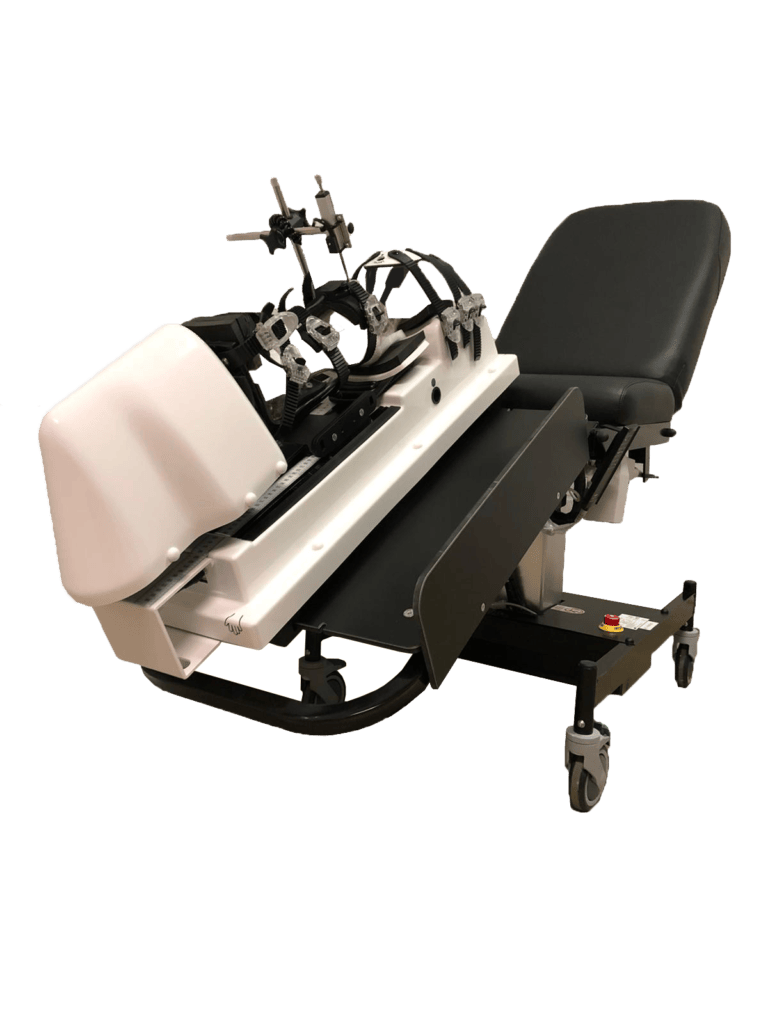
The precision in measuring ligament laxity and integrity is crucial for formulating an appropriate treatment plan. For orthopaedic surgeons, these tools aid in determining the need for surgery and planning the surgical approach. For radiologists, they provide additional data to supplement imaging findings, as highlighted in the 2023 study by Theo Cojean (5), which compares GNRB® with MRI, showcasing the tool’s effectiveness in ACL assessment. This study even showed that this dynamic arthrometer is more effective at diagnosing partial ACL ruptures compared to MRI.
Adding dynamic analysis to the standard clinical assessment and static MRI tests significantly enhances the evaluation of knee function and ACL integrity. Dynamic testing, particularly through the use of arthrometers, provides a real-time measure of how the knee responds to movement and stress, offering crucial insights into the joint’s functional stability. This is especially valuable in cases where static imaging may show only marginal changes, yet patients experience symptoms such as instability. By identifying subtle abnormalities in knee mechanics, which only manifest under load or during movement, dynamic analysis enables a more accurate diagnosis and targeted treatment.
Physical therapists and sports medicine doctors also utilise this information to tailor rehabilitation programs, ensuring a safe and effective return to the sport. The relevance of these tools is further emphasized in the 2023 study by Kayla Smith (5), demonstrating that GNRB can accurately measure the mechanical properties of the ACL, essential for clinical use and trial design.
Additionally, two significant studies shed light on the importance of these tools for sports medicine doctors and physical therapists. The first, a 2016 study by Semay et al. (11), analyzed the evolution of tibiofemoral anterior laxity during the return to sport after ACL reconstruction, using the GNRB device for evaluations. This study found significant changes in anterior-posterior laxity between 9 and 12 months postoperatively, suggesting the importance of ligament laxity as a parameter in sports recovery decision-making. The second study by Nouveau, Robert, and Viel, focusing on ACL grafts’ compliance over time in 2017 (12), emphasizes the influence of early rehabilitative interventions on the final stiffness of the graft after surgery. This study utilised automated dynamic laximetry, highlighting how biomechanical constraints applied on the knee can influence the grafts’ compliance post–surgery. It concludes that early correction of compliance, preferably within the first three months post-surgery, can significantly decrease the risk of future instability in patients.
These studies underscore the critical role of advanced diagnostic tools like Dyneelax and GNRB in providing valuable insights for personalized treatment and rehabilitation, enhancing the overall management of ACL injuries.
5.2 Benefits in Professinal Skiing: Early Detection of Potential ACL Weaknesses or Deteriorations
In the realm of professional skiing, early identification of potential anterior cruciate ligament (ACL) issues is critical, especially for those who have undergone ACL reconstruction. Arthrometers are instrumental in this regard, enabling consistent evaluations to detect subtle yet significant changes indicative of re-injury risks or healing progress.
Dynamic Arthrometer evaluations are strategically conducted pre-season, during the season, and post-season. They are a vital part of athletes’ health and fitness tracking.

Pre-season testing sets a baseline for each athlete’s knee health, crucial for spotting any changes during the competitive season that may suggest emerging injuries.
Mid-season assessments shed light on the effects of regular competition on knee stability, facilitating prompt interventions to prevent more severe injuries.
Post-season evaluations focus on identifying any wear and tear or injuries, essential for guiding off-season recovery and conditioning plans to maintain optimum knee health.
The dynamic results obtained from these tests offer crucial data that inform decision-making around training intensity, game readiness, and rehabilitation needs. For instance, a player showing signs of increased knee laxity mid-season might require modified training or temporary rest to prevent a full-blown ACL injury. Similarly, the post-season data can influence off-season conditioning programs, ensuring that athletes return for the next season in optimal knee health.
Incorporating these comprehensive evaluations using GNRB® and DYNEELAX® arthrometers into routine health assessments of ski athletes significantly enhances a manager’s ability to maintain its athletes’ peak physical condition and reduces the risk of debilitating injuries like ACL ruptures. This proactive approach exemplifies the merging of advanced sports medicine technologies with athletic care and management, underlining the evolving landscape of injury prevention and management in professional sports.
5.3 Clinical Validation: GNRB and Dyneelax in Action
In sports medicine, particularly in professional skiing, the accuracy and reliability of injury diagnosis and rehabilitation are paramount. The GNRB® and DYNEELAX® arthrometers have significantly advanced this field, offering precise measurements of knee laxity crucial for ACL injury management. These tools have been clinically validated through various studies, which have demonstrated their effectiveness in detecting partial ACL tears, ensuring reliable knee anterior laxity measurements, and aiding in comprehensive ACL assessment. Such validation highlights the critical role of GNRB and DYNEELAX in enhancing diagnostic accuracy and informing effective rehabilitation strategies, making them indispensable in modern sports medicine and injury management.
5.3.1 Pre-Operative Clinical Validation
The section begins by underscoring the importance of precise and reliable pre-operative assessments in ACL reconstruction surgeries. It emphasizes the role of advanced diagnostic tools, particularly the GNRB® and DYNEELAX® arthrometers, in enhancing the accuracy of knee injury evaluations. These technologies represent significant improvements over traditional methods, offering clinicians a comprehensive and objective analysis critical for optimal surgical planning and outcomes.
5.3.1.1 Automated Anterior/Posterior Tibial Translation Analysis:
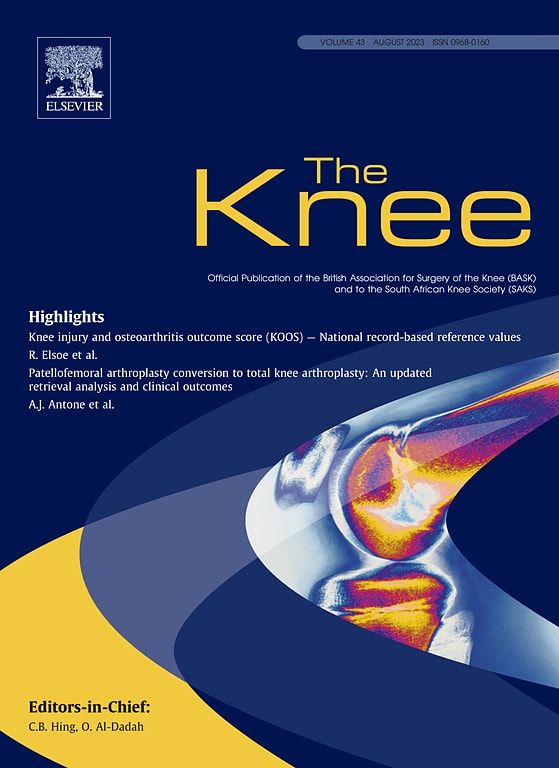
The GNRB® robotic arthrometer, an advancement over manual methods like the Lachman test, offers precise, consistent measurements for ACL and PCL diagnostics. It overcomes the subjectivity of manual tests by applying uniform force and measuring tibial translation.
Studies validating the GNRB®:
- 2023, Théo Cojean et al.(6): Demonstrated GNRB®’s higher sensitivity (73.77%) compared to MRI (29.51%) in detecting partial ACL tears.
- 2022, Miha Magdič et al.(14): Confirmed good intra-rater reliability of the GNRB® in measuring knee anterior laxity.
- 2015, Klouche et al.(15): Proved GNRB®’s diagnostic accuracy in identifying complete ACL tears.
- 2017, Jenny et al.(16): Validated GNRB® for measuring anterior tibial translation.
- 2022, Kayla Smith et al.(5): Highlighted GNRB®’s reliability in assessing ACL stiffness and laxity.
- And Many more…
5.3.1.2 Medial/Lateral Tibial Rotation Assessments:
The DYNEELAX® arthrometer is a significant development for measuring translation & rotational stability, surpassing the pivot shift test’s subjective limitations.
It provides precise assessments of medial and lateral knee rotation and extends to analyze the ACL, the PCL, the Anteromedial (AM), Posterolateral (PL), Anterolateral (AL), and Posteromedial (PM) corners of the knee. It should be noted that all the studies of the GNRB can also be applied to the DYNEELAX® because GNRB® technology has been incorporated in the DYNEELAX®.
Studies supporting DYNEELAX®‘s Rotation Analysis (We focus on rotation assessments here as translation has just been put forward with the GNRB®):
- 2014, Mouton et al.(18): Emphasized the importance of combining anterior and rotational laxity measurements.
- 2015, Mouton et al.(19): Validated the combined measurement approach.
- 2016, Nicolas Ruiz et al.(20): Explored the ACL’s and anterolateral structures’ roles in knee rotational dynamics.
- 2017, Senioris et al.(21): Confirmed the importance of assessing rotational laxity with anterior translation.
- 2023, Théo Cojean et al.(22): Evaluated the sensitivity, repeatability, and reproducibility of the Dyneelax.
- And Many more…
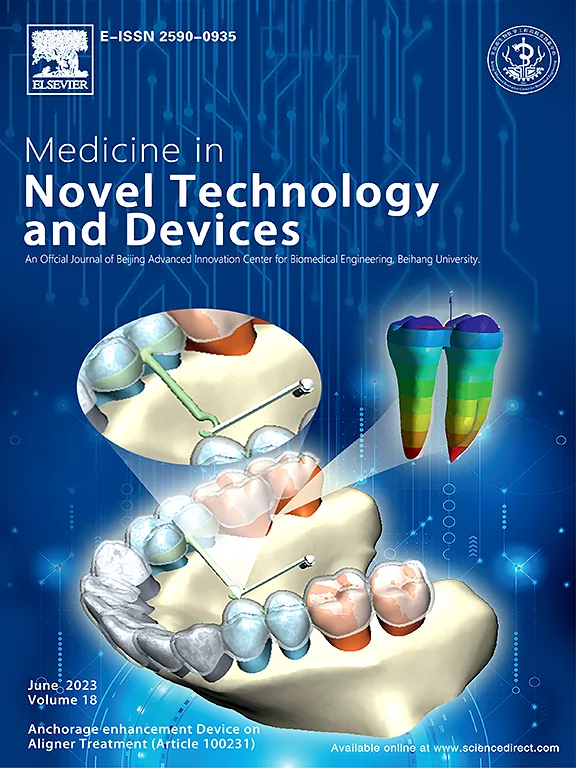
5.3.2 Post-Operative Clinical Validation
Postoperative rehabilitation following ACL surgery is enhanced by the use of arthrometer measurements, particularly with devices like the GNRB® and DYNEELAX®. These tools provide essential objective data for monitoring recovery and guiding rehabilitation.

Key studies supporting the use of robotic arthrometers in rehabilitation include:
- 2016, Semay et al. (10): Demonstrated the usefulness of the GNRB in monitoring anteroposterior laxity after surgery, aiding in tailoring rehabilitation plans.
- 2017, Nouveau et al.(11): Highlighted the significance of understanding changes in graft compliance over time for effective rehabilitation management.
- 2023, Forelli et al.(13): Emphasized integrating arthrometer assessments into rehabilitation programs for a safer return to activities.
- 2019, Pouderoux et al.(23): Analyzed the evolution of joint laxity and graft compliance post-ACL surgery, suggesting the importance of stabilizing these factors before returning to high-impact sports.
Conclusion
In conclusion, the article underscores the complexity of ACL injuries in skiing, a sport marked by its high-speed and dynamic nature. Key injury mechanisms like the slip-catch situation, dynamic snowplow, and Phantom Foot phenomenon are critical to understanding the epidemiology of these injuries. Each mechanism, whether it involves the ski catching an edge or the leverage effect of the ski and boot, highlights the unique biomechanical challenges skiers face and the resultant strain placed on the ACL.
The importance of prevention cannot be overstated. Educating skiers about the risks associated with specific skiing techniques and conditions is crucial. Training programs aimed at improving balance, strength, and technique are essential in mitigating the risks associated with these common injury mechanisms. Furthermore, the role of equipment in injury prevention is highlighted, stressing the need for proper equipment selection and maintenance.
In terms of diagnosis and management, the integration of advanced diagnostic tools like DYNEELAX® and GNRB® arthrometers is significant. These tools offer a more precise assessment of knee stability, crucial for accurate diagnosis, and effective treatment planning. For healthcare professionals, including orthopedic surgeons and sports medicine doctors, this means a more comprehensive approach to ACL injury management, combining traditional assessment methods with advanced diagnostic tools.
Ultimately, a multifaceted approach encompassing awareness, prevention, and accurate diagnosis is essential in managing ACL injuries in skiing. Such an approach not only enhances the safety and enjoyment of the sport but also contributes to the long-term health and performance of skiers. By understanding the mechanisms of injury, adopting preventive strategies, and utilizing advanced diagnostic tools, the incidence and severity of ACL injuries in skiing can be significantly reduced.
Medical References (Link In DOI)
- Posch, M., Schranz, A., Lener, M., Tecklenburg, K., Burtscher, M., & Ruedl, G. (2021). In recreational alpine skiing, the ACL is predominantly injured in all knee injuries needing hospitalisation. Knee Surgery, Sports Traumatology, Arthroscopy, 29(6), 1790-1796. DOI: 10.1007/s00167-020-06221-z
- Feagin Jr, J. A., Lambert, K. L., Cunningham, R. R., Anderson, L. M., Riegel, J., King, P. H., & VanGenderen, L. (1987). Consideration of the anterior cruciate ligament injury in skiing. Clinical Orthopaedics and Related Research, (216), 13-18. pubmed.ncbi.nlm.nih.gov/3815938/
- Hermann, A., & Senner, V. (2021). Knee injury prevention in alpine skiing. A technological paradigm shift towards a mechatronic ski binding. Journal of Science and Medicine in Sport, 24(10), 1038-1043. DOI: 10.1016/j.jsams.2020.06.009
- Westin, M., Harringe, M. L., Engström, B., Alricsson, M., & Werner, S. (2018). Risk Factors for Anterior Cruciate Ligament Injury in Competitive Adolescent Alpine Skiers. Orthopaedic Journal of Sports Medicine, 6(4), 2325967118766830. DOI: 10.1177/2325967118766830
- Smith K, Miller N, Laslovich S. (2022). The Reliability of the GNRB® Knee Arthrometer in Measuring ACL Stiffness and Laxity: Implications for Clinical Use and Clinical Trial Design. Int J Sports Phys Ther, 17(6), 1016-1025. DOI: 10.26603/001c.38252
- Cojean, T., Batailler, C., Robert, H., Cheze, L. (2023). GNRB® laximeter with magnetic resonance imaging in clinical practice for complete and partial anterior cruciate ligament tears detection: A prospective diagnostic study with arthroscopic validation on 214 patients. Knee, 42, 373-381. DOI: 10.1016/j.knee.2023.03.017
- Ruedl, G., Posch, M., Tecklenburg, K., Schranz, A., Faulhaber, M., & Burtscher, M. (2023). Skill-Specific Differences in Equipment-Related Risk Factors for ACL Injury in Male and Female Recreational Skiers. Orthopaedic Journal of Sports Medicine, 11(3), 23259671231155841. DOI: 10.1177/23259671231155841
- Bere, T., Flørenes, T. W., Krosshaug, T., Koga, H., Nordsletten, L., Irving, C., … Bahr, R. (2011). Mechanisms of anterior cruciate ligament injury in World Cup alpine skiing: a systematic video analysis of 20 cases. The American Journal of Sports Medicine, 39(7), 1421-1429. DOI: 10.1177/0363546511405147
- Järvinen, M., Natri, A., Laurila, S., & Kannus, P. (1994). Mechanisms of anterior cruciate ligament ruptures in skiing. Knee Surgery, Sports Traumatology, Arthroscopy, 2(4), 224-228. DOI: 10.1007/BF01845592
- Semay, B., Rambaud, A., Philippot, R., Edouard, P. (2016). Evolution of the anteroposterior laxity by GnRB at 6 9 and 12 months post-surgical anterior cruciate ligament reconstruction. DOI: 10.1016/j.rehab.2016.07.045
- Nouveau, S., Robert, H., Viel, T. (2017). ACL Grafts Compliance During Time: Influence of Early Solicitations on the Final Stiffness of the Graft after Surgery. Journal of Orthopedic Research and Physiotherapy, 3(1), 035. DOI: 10.24966/ORP-2052/100035
- St-Onge, N., Chevalier, Y., Hagemeister, N., Van De Putte, M., & De Guise, J. (2004). Effect of ski binding parameters on knee biomechanics: a three-dimensional computational study. Medicine and Science in Sports and Exercise, 36(7), 1218-1225. DOI: 10.1249/01.mss.0000132375.00721.7a
- Forelli F, Le Coroller N, Gaspar M, et al. (2023). Ecological and Specific Evidence-Based Safe Return To Play After Anterior Cruciate Ligament Reconstruction In Soccer Players: A New International Paradigm. IJSPT. Published online April 2, 2023. DOI: 10.26603/001c.73031
- Magdić M, Gošnak Dahmane R, Vauhnik R. (2023). Intra-rater reliability of the knee arthrometer GNRB® for measuring knee anterior laxity in healthy active subjects. Journal of Orthopaedics. DOI: 10.1016/j.jor.2023.03.016
- Klouche S, Lefevre N, Cascua S, Herman S, Gerometta A, Bohu Y. (2015). Diagnostic value of the GNRB® in relation to pressure load for complete ACL tears: A prospective case-control study of 118 subjects. Orthopaedics & Traumatology: Surgery & Research, 101(3), 297–300. DOI: 10.1016/j.otsr.2015.01.008
- Jenny J-Y, Puliero B, Schockmel G, Harnoist S, Clavert P. (2017). Experimental validation of the GNRB® for measuring anterior tibial translation. Orthopaedics & Traumatology: Surgery & Research. Received: 7 October 2016, Accepted: 30 December 2016 DOI: 10.1016/j.otsr.2016.12.011
- Smith K, Miller N, Laslovich S. (2022). The Reliability of the GNRB® Knee Arthrometer in Measuring ACL Stiffness and Laxity: Implications for Clinical Use and Clinical Trial Design. Int J Sports Phys Ther, 17(6), 1016-1025. DOI: 10.26603/001c.38252
- Mouton, C., Seil, R., Meyer, T., Agostinis, H., Theisen, D. (2015). Combined anterior and rotational laxity measurements allow characterizing personal knee laxity profiles in healthy individuals. Knee Surgery, Sports Traumatology, Arthroscopy, 23, 3571-3577. DOI: 10.1007/s00167-014-3244-6.
- Mouton, C., Theisen, D., Meyer, T., Agostinis, H., Nührenbörger, C., Pape, D., Seil, R. (2015). Combined anterior and rotational knee laxity measurements improve the diagnosis of anterior cruciate ligament injuries. Knee Surgery, Sports Traumatology, Arthroscopy, 23, 2859-2867. DOI: 10.1007/s00167-015-3757-7
- Ruiz, N., Filippi, G.J., Gagnière, B., Bowen, M., Robert, H.E. (2016). The Comparative Role of the Anterior Cruciate Ligament and Anterolateral Structures in Controlling Passive Internal Rotation of the Knee: A Biomechanical Study. DOI: 10.1016/j.arthro.2016.02.017
- Senioris, A., Rousseau, T., L’Hermette, M., Gouzy, S., Duparc, F., Dujardin, F. (2017). Validity of rotational laxity coupled with anterior translation of the knee: A cadaveric study comparing radiostereometry and the Rotab®. DOI: 10.1016/j.knee.2017.01.009
- Cojean, T., Batailler, C., Robert, H., Cheze, L. (2023). Sensitivity repeatability and reproducibility study with a leg prototype of a recently developed knee arthrometer: The DYNEELAX®. Medicine in Novel Technology and Devices, 19, 100254. DOI: 10.1016/j.medntd.2023.100254
- Pouderoux, T., Muller, B., Robert, H. (2019). Joint laxity and graft compliance increase during the first year following ACL reconstruction with short hamstring tendon grafts.. DOI: 10.1007/s00167-019-05711-z


